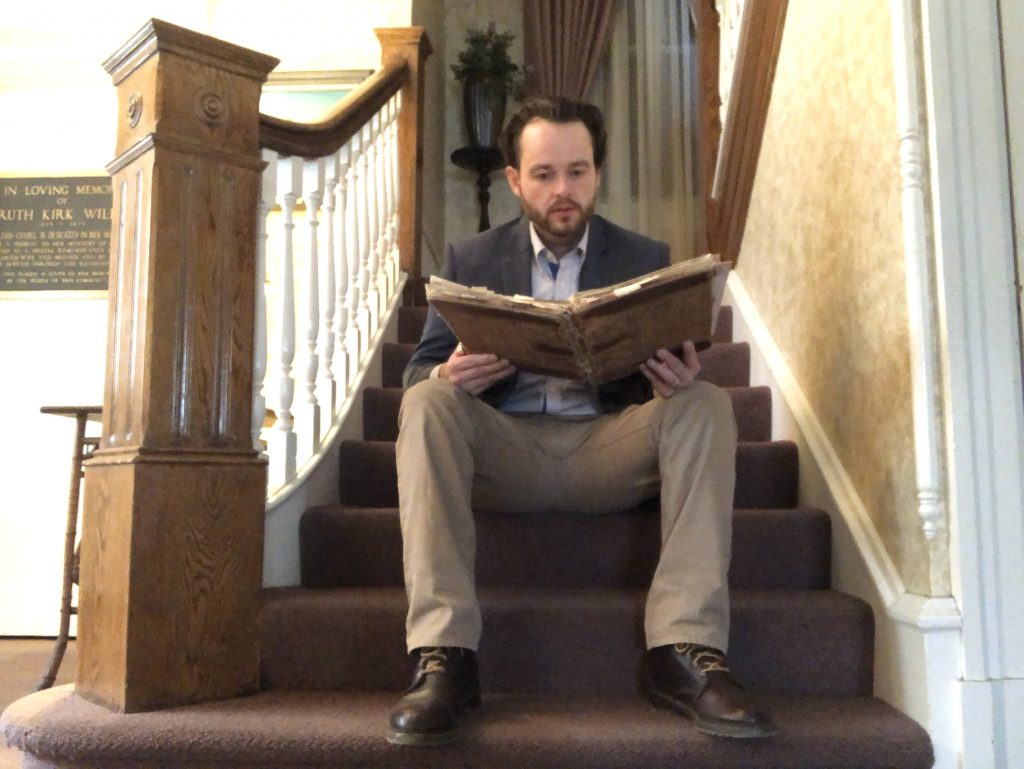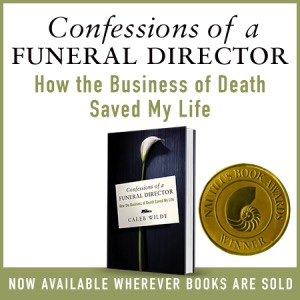Death Care Isn’t Entirely Prepared for COVID-19

Nearly two weeks ago, our funeral home was notified of the death of a 47-year-old woman named Diane (both the name and circumstances have been changed to protect privacy). After talking with Diane’s daughter, I scheduled the family to come into the funeral home the following day at 2 PM to make funeral arrangements. On cue, Diane’s husband, mother and two high school-aged daughters were standing at our funeral home’s porch at 2 PM waiting for me to open the door.
Her family was exhausted. I could see it in their faces. As I would come to find out, Diane’s aneurysm was unexpected and sudden. She was standing in the doorway of her home, told her husband she felt weird and collapsed immediately after. The EMTs kept her alive and for a few days and many more tests, they all sat vigilantly by her hospital bed waiting to find out if this was her end or the beginning of a long recovery process. After they received their answer, they were also by her side when the ventilator was removed.
When I meet with families that are grieving a sudden and tragic death, I try to prepare myself for the trauma and pain I’m going to witness. Secondary trauma is what EMTs, ER staff, police, and, yes, death care workers experience when we step into someone else’s tragedy. Secondary trauma is never as intense as it is for primary recipients, but over time secondary trauma can build itself into burnout, compassion fatigue, depression, and even PTSD, all of which I and many in my profession hide beneath the suits. Secondary trauma is the quiet trauma held by caregivers like myself. We often minimize our own pain so that we can focus on the pain of others. Unknowingly and unintentionally, that minimization of our own feelings eventually diminishes our ability to care for those who need us.
The day before Diane was removed from her ventilator, the CDC issued their recommendation that gatherings of no more than 50 people should take place. Diane’s funeral arrangements were the first I would make since the CDC’s recommendation and I wasn’t exactly sure how I was going to address that recommendation when many people in my area still believed COVID-19 to be no worse than the flu.
I opened the funeral home’s door and sat them down in our conference area. After I listened to the family tell Diane’s story for over a half an hour, I felt like I had gained enough of their trust to talk about the CDC’s recommendation. I paused. Took a deep breath and said,
“I know you guys have been in the hospital for the last couple of days and you may not have been following the news, but the Coronavirus has become a legitimate public threat. The CDC suggests no public gatherings over 50 people.”
They all looked at me, trying to decide if I was really brazen enough to follow through with my line of thinking.
I continued, “I’m recommending that you have a private service for only your family and intimate friends.”
The reaction on their faces was something I’ve never seen in all my years of serving bereaved families. It was a combination of anger and assertiveness, grief and hopelessness. As I had learned from the stories they had just told me, Diane served in the ladies auxiliary for two local fire companies, she was very involved in her church and helped manage all of her daughters’ sports teams.
“Diane deserves a big sendoff”, her husband responded instinctually. “She was loved by all of us and I need everyone who loved Diane to come together for a funeral.”
I assumed that would be their response and I was prepared to help them have the funeral they wanted. We scheduled it for the following Thursday at Diane’s church. They expected over 500 people to attend the service.
As the days passed leading up to Diane’s funeral, my anxiety grew as I realized the next couple of months will be unlike anything death care workers have seen in our lifetime. It has that same ominous feeling that those of us in Pennsylvania feel when there’s a Nor’easter churning up the coast, leaving high snowdrifts and power outages in its wake. One day the sky is blue, and the sun is bright and the next day the snow is so blinding you can hardly see. You prepare the best you can by buying rock salt, getting the snowplow ready and checking to make sure the generator still works. And then you wait.
Just … wait.
Right now, the COVID-19 Nor’easter is hitting Bergamo, Italy where funeral homes are dealing with five to six times their normal amount of work. They don’t always have room for the bodies. And funerals aren’t even a possibility. There are so many deaths that the obituary section of the Bergamo newspaper has had nine to ten pages compared to their normal one or two. In Spain, the body count is so overwhelming that they’re using an ice rink to help keep the deceased from decomposing.
Soon after the Bergamo reports hit the headlines, people within and without the funeral industry started giving us practical guidance on how we should protect ourselves against COVID-19. The DHS and CISA have labeled death care workers “critical infrastructure workers”. Just as we do for holidays, the middle of the night and any other time death happens, we’ll be prepared to work the entire way through this pandemic.
Yesterday, I pulled out our funeral home’s contract book from 100 years ago. Back then, my great grandfather, James Wilde, was serving about 35 bereaved families a year. That average was consistent until 1918 when the Spanish Influenza tripled the average to exactly 100 deceased persons. At the time, 100 bodies maxed out our funeral home’s capacity, but it didn’t overload it. Today, we serve approximately 300 families each year. If that number is tripled like it was in 1918 we will simply have no place to store 900 bodies. Like Italy and now Spain, we will have to improvise.
Last week I purchased an extra refrigerated storage unit, a new removal cot, and extra body bags. Like that Nor’easter, however, if the snow is too deep, creates too much damage, and our best-made plans become overwhelmed, we always find a way to get through it. Just like those of us in the northeast who have to deal with unpredictable weather, funeral directors are a creative and resilient group of people.
An overwhelming body count isn’t what scares me the most. This is more than one-dimensional preparation. And because our preparation is only one-dimensional, that’s why I say we’re not entirely prepared.
I’ve yet to hear anyone talk about the potential burnout for our industry and for the many others caregivers that will be affected. Burnout can be equally as dangerous and crippling to our health as COVID-19 itself. Many of us are already burnt out and dealing with an unhealthy mental state. I know I myself have dealt with suicidal ideation and major bouts with depression throughout my career. The fact is that caregivers are rarely good at taking care of themselves. We’re like the five-star chef who makes unimaginably good food for her customers but will only allow herself to eat the scraps.
Two days before Diane’s funeral was to take place, her husband called. “I don’t want to, but I’m going to make this funeral private”, he said. “I can’t put the people who loved her at risk. We’re gonna cancel the public service. I don’t want her friends and family to have to choose between honoring Diane and putting their health at risk.” As I listened to him and tried to affirm him, I have to admit that it was hard to hear him grieve over lost grief. It was a foretaste of things to come. We won’t just be witnessing an overwhelming amount of tragic deaths, we’ll be witnessing people who are grieving the loss of communal grieving.
My wife and I have been preparing our eight and two-year-old kids for the potentiality that I could contract COVID-19. I told them that this pandemic will likely affect us, maybe even affect those we love who are at most risk. I told them that Daddy is still working and I will do my best to stay healthy, but I could very well be exposed to the sickness. I told them that they’ll need to be leaders going forward, ready to take on some more house responsibilities in case Daddy has to rest a few days. And just like I’ve enlisted my own children to help me in case I need it, I implore funeral homes to start enlisting capable women and men who can help them because we will need it!
As those of us in funeral service have seen time and again, when things fall apart, people find an untapped capacity for generosity and kindness. That’s what I want from us in death care and health care. The families we work for need the best from us. If we can start a conversation about burnout and self-care now, we can have generosity later. Caregivers can care for others and care for themselves too. We must care for ourselves.
It’s very likely that the funeral industry in the United States will be overwhelmed in the coming months, especially if our leaders continue to be so reluctant to take preventative measures. While the industry might be overwhelmed, I’d like to believe if we can talk about the psychological impact this will have on us now, we can find ways to keep ourselves together. While our facilities may be overwhelmed, I’d like to believe that we don’t have to be.
